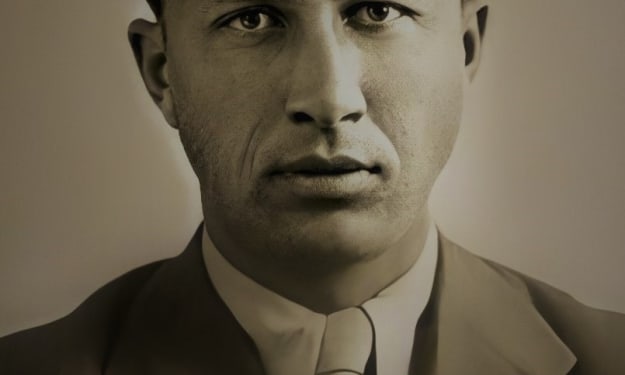The Mystery Of Michigan's Relics
Were they discovered or planted?

A sign painter, James O. Scotford, on the west side of the state was digging in the field one October 1890 when his shovel struck something hard. He quickly dug out with his hands and was stunned by the discovery.
He discovered a clay cup with mysterious symbols on it. The artifact was believed to be from the Mediterranean and Near Eastern, popular designs at the time. The community began talking about what the discovery could mean.
In the days that followed, Scotford found more of these pieces, according to Archaeology, a publication of the Archaeological Institute of America.There were similar symbols etched into all of the artifacts, leading to rumors that Mediterranean or Near Eastern people may once have lived in Michigan.
Having become a celebrity for his discovery of the "Michigan relics," Scotford was hired as a leader of excavation teams and led groups to the sites where he believed more artifacts could be found.
With the discovery of more items, speculation ramped up that this was evidence that another group lived in Michigan in ancient times. Many believed that the group must have been Near Eastern because of the marks on the artifacts, but others were not convinced.
Scotford looked to some of the foremost art history academics for advice, confident that they would back his claim that the pieces he'd found were authentic.
Their reaction surprised him.

Professors Have Their Say
Albert Emerson, a University of Michigan professor, said in 1891 that he had no way of believing that these were from another civilization after seeing a photograph of them. An opinion that did not change when he saw them in person.
According to an opinion he wrote in U of M's Deep Blue, the artifacts were "bad enough in the photograph... an examination proved them to be humbugs of the first water."
Prof. Francis W. Kelsey, a colleague of Emerson's at the University of Michigan, agreed that the markings looked like a combination of "jumbled ancient scripts."
In a Bentley Library report, Kelsey and Emerson were among the first academics to claim the findings were fraudulent. They claimed the artwork had been forgeried without paying enough attention to the details.
A lion without a tail was one such detail that an ancient artist would not have missed. In addition, the cuneiform characters on the artifacts did not fit with any time period. Further, the artifacts disintegrated in water, proving that they had not been buried for long.
It turned out that not everyone agreed with the experts; some clergymen sided with Scotford and said that the symbols were biblical.

Real Or Fraud?
Some people still believe that a Near Eastern group of people could have lived in Michigan at one point in time, despite the artifacts being debunked at the time by the leading experts. They point out that the experiments weren't perfect and that there are some things that we still learn about ancient civilizations.
The majority of experts say that even though we are still learning, it is unlikely these artifacts are genuine. Alma College says Scotford's family admitted that he tried to pull a fast one on the community. Some people, however, claim that's not the case or they misunderstood what happened.
Known for her profound knowledge of many fields, including linguistics, Henriette Mertz examined the artifacts in 1986 and said there might be a chance that they are genuine before actually handling them.
According to Mystery Michigan, some of the symbols might refer to religious figures like Jesus Christ. In a paper, she wrote: "One peculiar thing stood out, even though the letters may be a mixture, the mixture within itself appeared consistently uniform.”
The debate over whether or not the artifacts are legitimate has raged on since then. Both sides have compelling arguments, but neither have been able to convince the other to agree with them.
About the Creator
Edward Anderson
Edward has written hundreds of acclaimed true crime articles and has won numerous awards for his short stories.






Comments
There are no comments for this story
Be the first to respond and start the conversation.